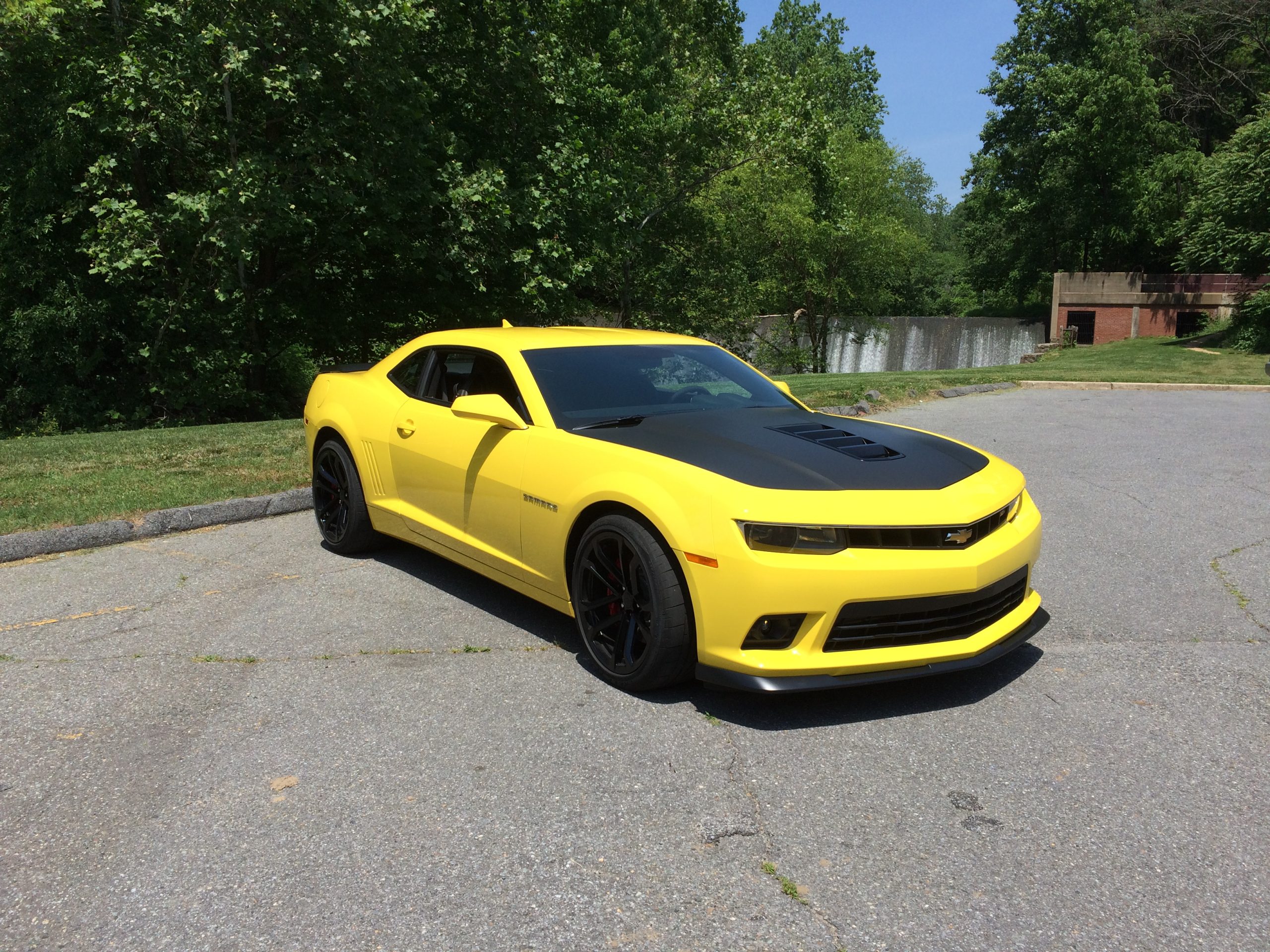When purchasing a vehicle, most consumers consider factors like engine performance, fuel efficiency, safety features, and comfort. But one crucial area that often escapes attention—until the costs start piling up—is tire wear. Tires are a vital yet consumable part of any automobile, directly affecting performance, safety, ride comfort, and overall ownership costs.
While no tire lasts forever, the rate at which they wear out can vary dramatically depending on the car they’re mounted on. Everything from the car’s drivetrain, suspension geometry, and weight distribution to its power output and intended use plays a role in determining how quickly—or slowly—those expensive rubber rings need replacement.
Understanding a vehicle’s tire-wear profile can provide critical insights into its long-term affordability and day-to-day drivability. For instance, a high-performance sports car may deliver exhilarating speed and handling but come at the cost of tire life that barely reaches 15,000 miles.
On the flip side, an economical sedan may lack the flash but reward owners with tires that last 60,000 miles or more. These differences might seem marginal initially, but when you account for the rising costs of premium tires and the frequency with which replacements are needed on certain cars, tire wear becomes more than just a minor detail—it becomes a budgetary consideration.
What’s more, tire wear isn’t solely a function of how aggressively one drives. Some vehicles are engineered with naturally tire-conservative setups, including modest power delivery, balanced suspension tuning, and optimized alignment. Others, especially high-horsepower or heavy performance cars, are inherently harsh on their rubber, even when driven sensibly.
Manufacturers may equip their performance trims with soft-compound tires designed for maximum grip, but those same tires often have treadwear ratings below 300, leading to significantly shorter lifespans. On the other hand, a commuter car with a more practical outlook might come standard with all-season touring tires rated for twice the mileage.
This article takes a detailed look at ten specific vehicles—five that stand out for their exceptionally low tire-wear rates, and five that are infamous for rapidly wearing out their tires. These examples have been selected based on engineering characteristics, real-world owner reports, and design philosophies that directly impact tire longevity.
For each car, we explore what makes it either gentle or brutal on tires, factoring in the powertrain, suspension, weight, tire type, and driver tendencies typically associated with that model.
Whether you’re a budget-conscious commuter who wants to minimize maintenance expenses or an enthusiast willing to trade rubber for road thrill, understanding where your vehicle—or your next one—stands on the tire wear spectrum is essential.
In a market saturated with new models and performance promises, the long-term cost of consumables like tires can quietly creep up. Knowing which vehicles stretch tire life—and which burn through them—can shape smarter buying decisions.
Additionally, we explore how driver behavior intersects with design, showing how two people can have drastically different experiences even in the same vehicle. A Toyota Camry driven conservatively will likely see a tire lifespan far exceeding 60,000 miles.
Meanwhile, a Dodge Charger Hellcat that’s launched at every red light may require new rubber within just 10,000 miles. But it’s not all about behavior—some cars are built in ways that simply make them more tire-friendly, while others are designed with performance above all else, often sacrificing longevity in the process.
So, if you’re trying to stretch every dollar out of a set of tires, or you’re simply curious about which cars eat up rubber and which make it last, this guide will provide a clear, in-depth look at how tire wear aligns with automotive design. It’s not just about driving habits—it’s about the machine you drive.
Also Read: 5 EVs with the Best Charging Port Locations and 5 with the Most Awkward
Five Cars with the Lowest Expected Tire-Wear Rate
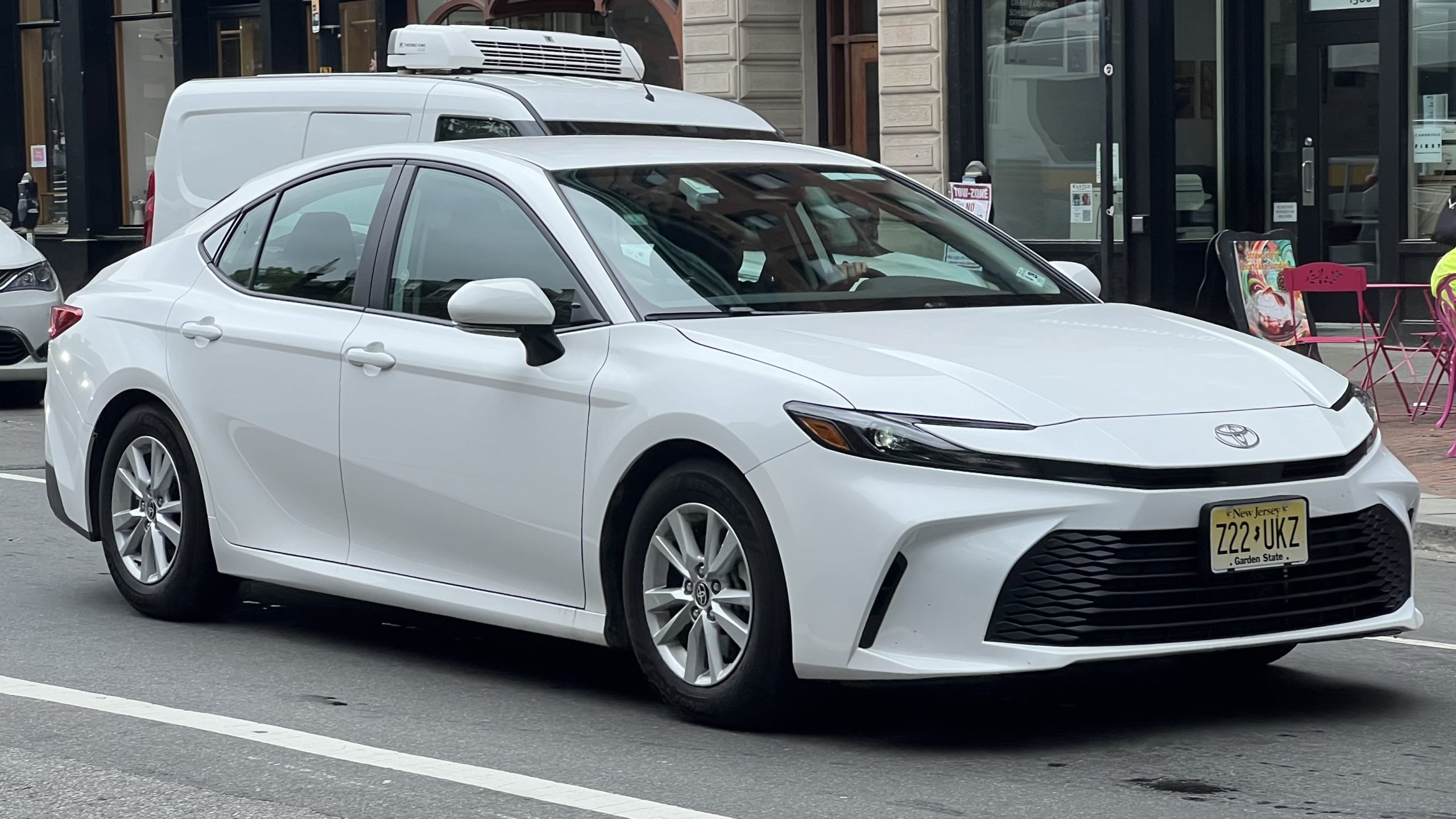
1. Toyota Camry
The Toyota Camry has earned a near-legendary reputation for reliability, and this reputation extends well beyond its engine and transmission. Tire wear, often overlooked in vehicle assessments, is one area where the Camry quietly excels.
Its low tire-wear rate is largely due to its conservative design philosophy, which emphasizes smooth operation, moderate acceleration, and comfort over outright sportiness.
The base engine is a four-cylinder unit that provides adequate but not overwhelming power, which translates to smoother torque application and reduced stress on the tires. This power delivery is particularly tire-friendly, especially in urban environments where stop-and-go traffic can otherwise lead to faster degradation.
The Camry’s suspension system also plays a crucial role. Designed for comfort rather than aggression, the suspension absorbs road imperfections without transmitting harsh forces to the tires. This not only improves ride comfort but also extends tire life by minimizing the micro-traumas that slowly degrade tread.
Its strut-type front suspension and multi-link rear suspension are tuned for compliance, keeping all four tires planted evenly and ensuring uniform wear patterns across each contact patch. In addition, Toyota engineers have worked tirelessly to achieve near-optimal alignment settings from the factory, which reduces uneven wear—especially along the inner or outer edges.
Wheel and tire sizing on the Camry also contributes to its excellent longevity. Rather than opting for oversized wheels or ultra-low-profile tires that look aggressive but sacrifice durability, Toyota generally equips the Camry with wheels in the 16–18 inch range, paired with all-season tires that balance grip and longevity.
These tires often have treadwear ratings in the 600–700 range, which is significantly higher than the 300–400 ratings seen in performance tires.
Additionally, Camry owners often stick with OEM-equivalent tires during replacements, further ensuring long-term durability. Regular tire rotations and alignments, which are part of Toyota’s scheduled maintenance plan, help maintain this longevity.
Finally, the Camry’s typical driver profile contributes to its low tire-wear rate. Unlike sports sedans or turbocharged crossovers that invite aggressive driving, the Camry appeals to commuters, families, and retirees—drivers who value smooth rides over speed. These driving habits reduce sudden stops, hard cornering, and rapid acceleration, all of which can accelerate tire wear.
In combination with quality OEM tires, well-tuned suspension, and moderate driving behavior, the Toyota Camry becomes one of the most tire-friendly vehicles on the road today.
Owners regularly report tire life exceeding 60,000–70,000 miles, making the Camry a smart choice for those who value efficiency, predictability, and low long-term operating costs.
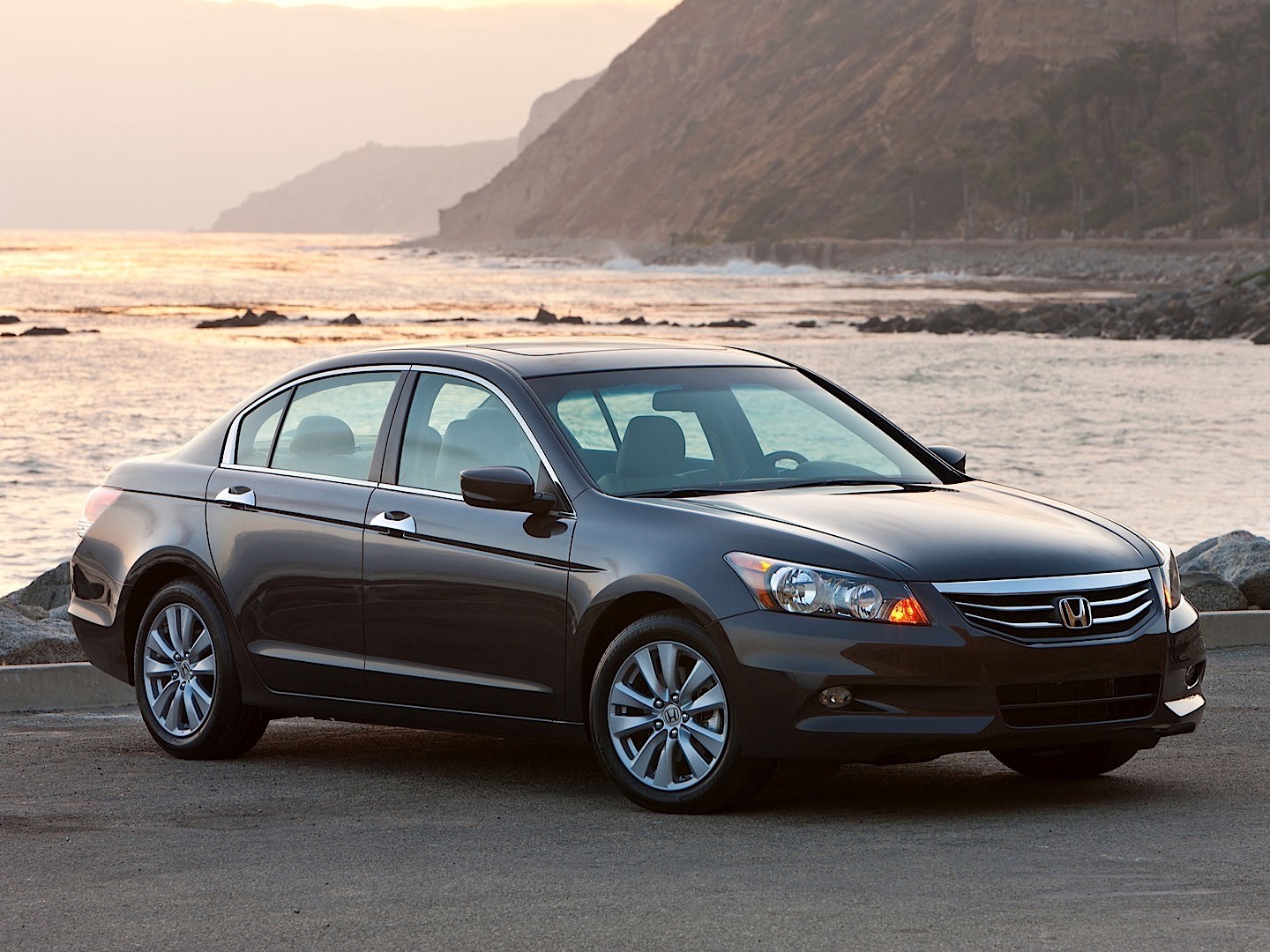
2. Honda Accord
The Honda Accord has long struck a balance between practical daily driving and subtle sportiness. This equilibrium works in favor of tire longevity. Honda has engineered the Accord’s powertrain, chassis, and suspension system to deliver a stable, comfortable ride that minimizes unnecessary tire stress.
Whether equipped with the 1.5L turbocharged engine or the naturally aspirated 2.0L in older models, the power delivery remains linear and manageable.
This predictability in acceleration reduces the frequency of traction loss and tire chirping, both of which are common culprits in premature tire wear. Moreover, the Accord’s torque curve is tuned for efficiency, meaning less torque dump on the front wheels—particularly important in front-wheel-drive vehicles where front tires tend to wear faster.
Suspension geometry plays a big part in keeping tire wear minimal. Honda has carefully designed the Accord’s suspension, shifting between double-wishbone and MacPherson strut systems depending on generation, to ensure stable tire contact throughout all driving conditions.
Camber, caster, and toe angles are optimized from the factory to encourage even tread wear. Even during spirited driving, the Accord maintains solid contact with the road, avoiding excessive pressure on the tire shoulders.
This is a major contributor to long-term tire health. In fact, Honda dealerships often highlight this in service visits, noting that customers who maintain alignment and rotate regularly rarely face premature tire replacements.
Another important factor is Honda’s focus on OEM tire quality and sizing. The Accord typically comes with mid-range all-season tires from reputable manufacturers such as Michelin, Continental, or Goodyear. These are selected for their balance of ride comfort, grip, and durability, with most having treadwear ratings in the 500–700 range.
The sidewalls provide adequate cushioning, which helps absorb road imperfections and reduces the risk of internal tire damage or sidewall bubbling—issues that often lead to early tire replacement. Furthermore, Honda doesn’t push the limits with tire widths or wheel sizes, avoiding the ultra-low-profile designs that shorten tread life.
Driver behavior and target demographics also factor heavily into why the Accord maintains such strong tire longevity. While the Accord does attract some younger drivers thanks to its styling and optional turbo engine, the vast majority of owners use it for commuting, family transport, or long-distance travel.
These driving styles generally involve steady speeds, smooth acceleration, and minimal cornering forces—ideal conditions for preserving tire tread. Overall, the Honda Accord stands as a vehicle that respects the wallet not only at purchase but across the lifecycle, especially when it comes to tire-related expenses.
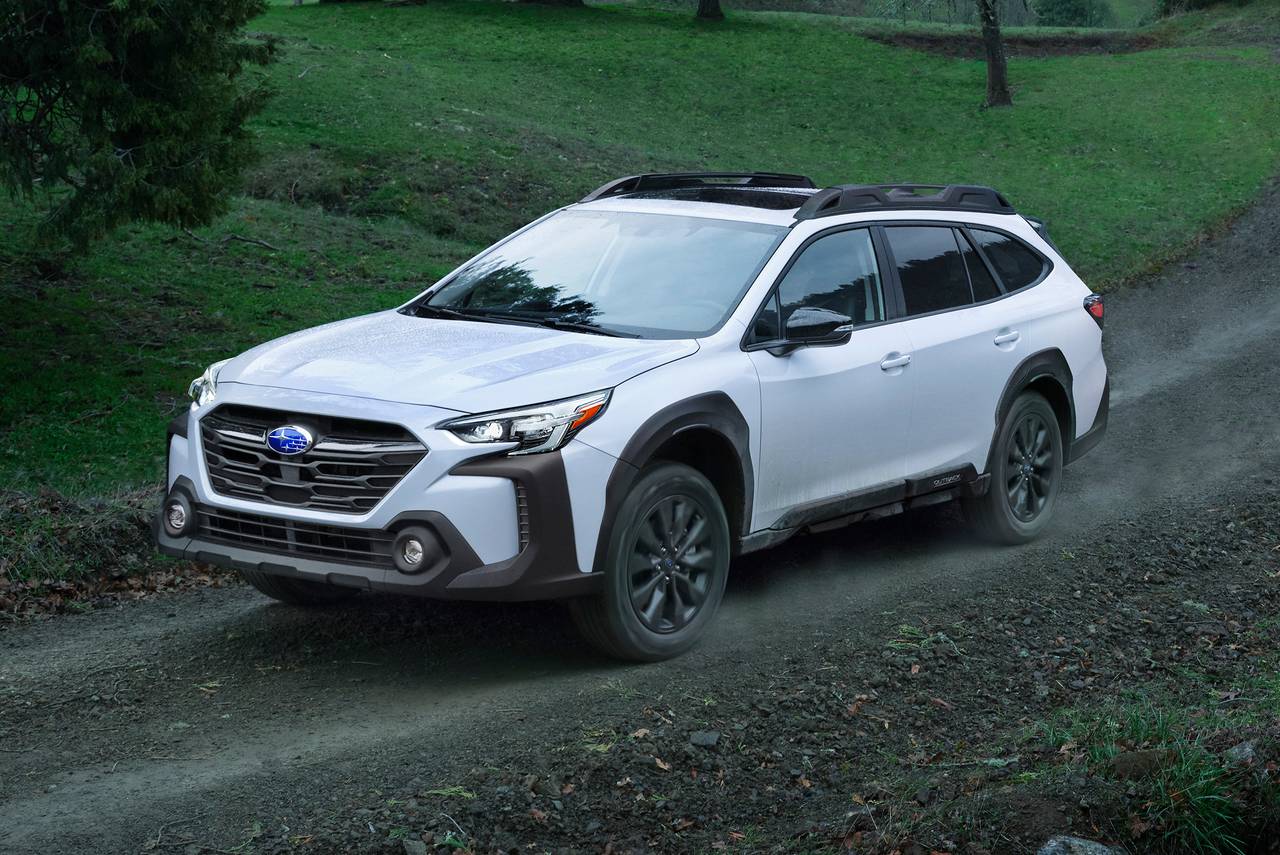
3. Subaru Outback
The Subaru Outback is an interesting entry on this list because it’s an all-wheel-drive (AWD) vehicle that still manages to maintain an impressively low tire-wear rate. One might assume that AWD systems inherently increase tire wear due to continuous torque delivery to all four wheels, but Subaru’s symmetrical full-time AWD system is designed with tire longevity in mind.
Unlike part-time AWD setups, which often put irregular strain on different axles, the Outback’s drivetrain ensures equal power distribution and consistent rotational force across all wheels. This significantly reduces mechanical drag and promotes even wear, especially when tires are properly rotated at regular intervals.
Beyond the AWD system, the Outback benefits from Subaru’s finely tuned suspension. It’s designed for comfort and moderate off-road ability, which means it absorbs rough terrain better than many similarly sized crossovers. The suspension reduces the impact force that’s transferred to the tires, preserving tread depth even when driving on pothole-ridden roads or gravel.
In particular, the Outback’s long-travel suspension setup helps to evenly distribute vehicle weight during driving maneuvers like braking, accelerating, or cornering. This results in less sidewall strain and reduced uneven wear on tire shoulders, which are common problem areas in many crossover vehicles.
Tire selection is also an area where Subaru makes consumer-friendly decisions. The Outback is commonly fitted with high-profile all-season tires, which inherently last longer than their performance or low-profile counterparts. The higher sidewall not only improves ride quality but also protects the tire from impacts and curb scrapes that could lead to early failure.
Tire manufacturers like Yokohama, Falken, or Continental often supply the OEM rubber, with treadwear ratings above 600, ensuring that the average driver can get upwards of 70,000 miles from a set with proper maintenance. Additionally, because the Outback isn’t a performance-oriented SUV, it avoids the wider tires that often wear unevenly on sportier vehicles.
The Outback’s driver base further supports its excellent tire wear performance. Owners are typically pragmatic, maintenance-oriented individuals who adhere to regular service intervals and avoid aggressive driving.
They often use the vehicle for camping trips, commutes, or snowy-road navigation, all of which encourage smoother throttle and brake usage. With a design philosophy centered around balance and durability, the Subaru Outback rewards responsible driving with one of the lowest tire replacement frequencies in the crossover segment.
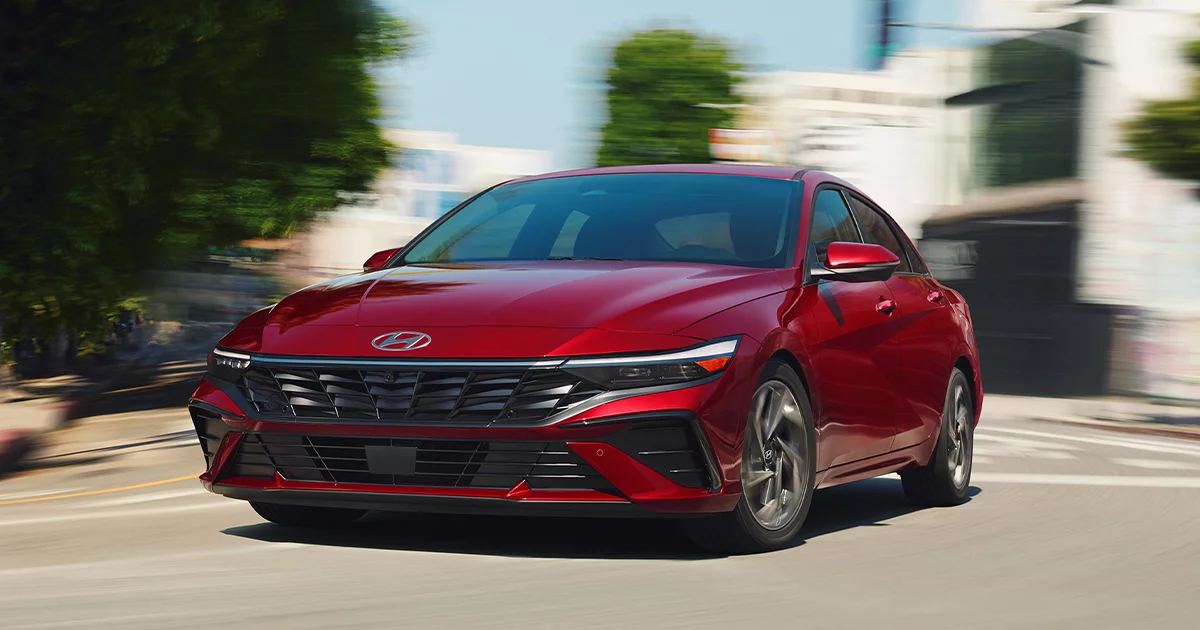
4. Hyundai Elantra
The Hyundai Elantra has evolved into a legitimate contender in the compact sedan segment, and one of its more subtle strengths is its impressive tire longevity. Hyundai has engineered this car with an eye toward affordability and low ownership costs, and this translates directly to how gently it treats its tires.
Most Elantra trims are equipped with modestly powered engines that offer smooth acceleration without excessive torque, which means the front tires (which often wear fastest on front-wheel-drive cars) are not subjected to aggressive forces. Whether you’re driving the naturally aspirated model or the fuel-sipping hybrid, the Elantra never stresses the tires more than necessary.
The suspension setup on the Elantra further promotes even tire wear. With a MacPherson strut front suspension and torsion beam or multi-link rear (depending on the trim), the Elantra offers a compliant, well-damped ride. Hyundai’s engineers have focused on comfort and predictability, ensuring minimal toe or camber change during driving maneuvers.
This means that tires remain flat against the road even during turns or when carrying heavier loads, which helps prevent cupping and feathering—two common types of irregular wear. Many drivers report that their Elantras exhibit no abnormal tire behavior even after tens of thousands of miles, provided that regular maintenance like rotations and alignments are performed.
Another tire-friendly aspect of the Elantra is its use of high-profile, durable all-season tires. Most trims come with 15–17 inch wheels and 60+ sidewall aspect ratios, which cushion the ride and protect the tire from road impact. These tires are less likely to develop bubbles or suffer sidewall damage than lower-profile performance tires.
They’re also rated for long life, with many OEM tires having treadwear scores well above 500. The availability of affordable, long-lasting tire replacements further enhances the Elantra’s standing among cost-conscious consumers who want maximum value from each set of rubber.
Lastly, Elantra owners are typically not aggressive drivers. The vehicle attracts urban commuters, students, and families who prioritize economy and comfort. These demographics naturally engage in driving behaviors that extend tire life: smooth acceleration, gentle braking, and consistent speed maintenance.
Hyundai even includes tire pressure monitoring and other driver aids that indirectly contribute to tire health. Taken together, the Elantra’s light weight, smart suspension geometry, and low-stress drivetrain make it one of the best in its class for minimizing tire wear and maximizing mileage per set.
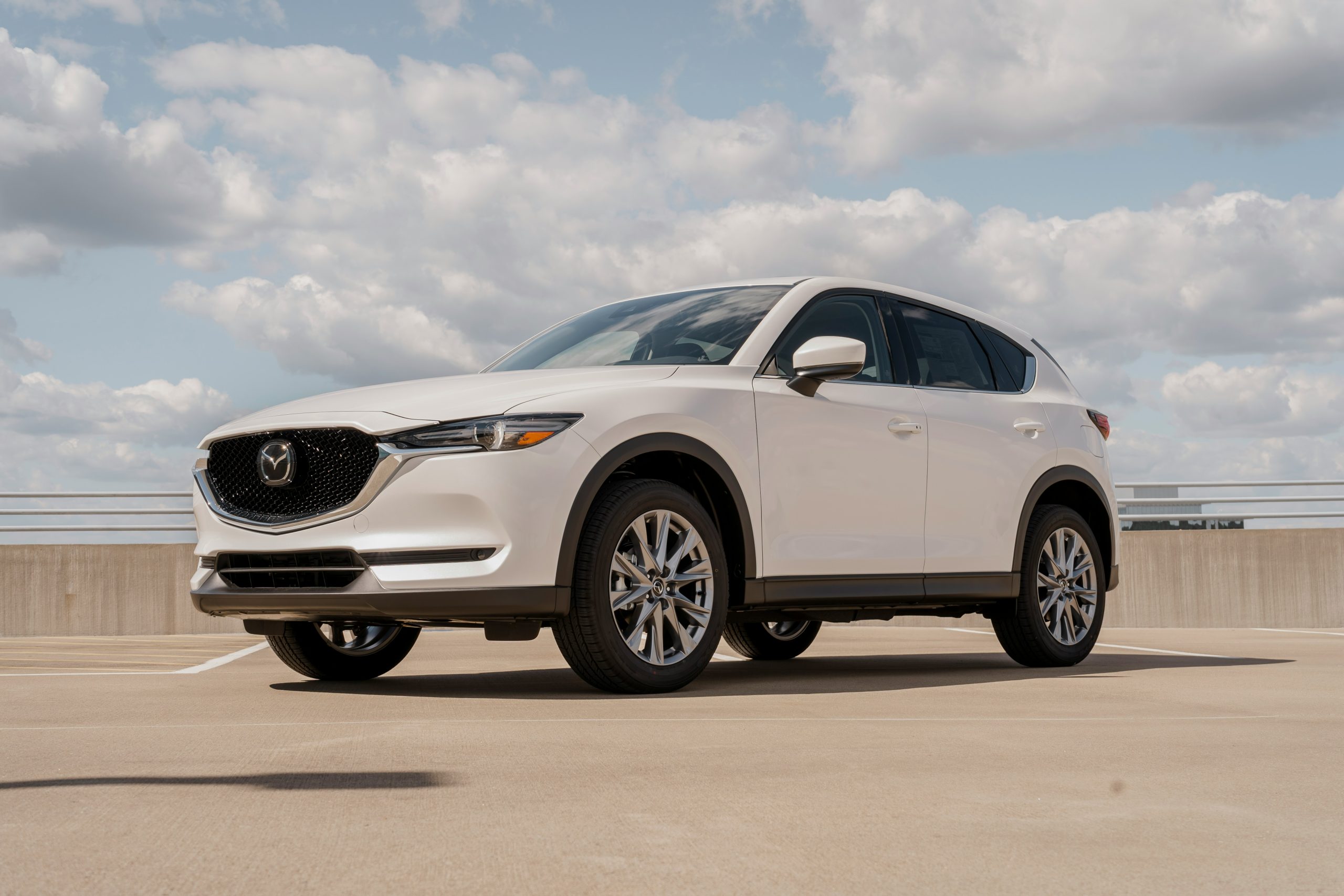
5. Mazda CX-5
The Mazda CX-5 is an excellent example of how a compact SUV can blend driving enjoyment with mechanical refinement—and still be easy on tires. While Mazda’s “Zoom-Zoom” philosophy often brings to mind spirited handling and responsive engines, the CX-5 stands apart by delivering this driving pleasure without the cost of accelerated tire wear.
Its suspension is firm enough to inspire confidence in corners, yet supple enough to protect tires from unnecessary stress. This balance means that whether you’re taking tight on-ramps or cruising city streets, the tire contact patch remains consistent and well-managed, reducing uneven tread wear and minimizing shoulder degradation.
One of the most critical contributors to the CX-5’s low tire wear is its finely tuned chassis. Mazda has invested heavily in what it calls “G-Vectoring Control Plus,” a system that subtly adjusts engine torque during cornering to optimize weight transfer and tire contact. This reduces the lateral load on tires in curves, promoting even wear across the tread.
Combined with a relatively lightweight unibody structure, the vehicle’s mass doesn’t press down on tires as harshly as larger crossovers. The suspension’s geometry also resists excessive negative camber and aggressive toe-in, helping ensure that tires wear flat and evenly across the tread block, not just at the edges.
Factory tire choices are also pragmatic. The CX-5 is typically fitted with 17- or 19-inch wheels wrapped in all-season rubber that’s known for longevity rather than performance grip. Tire brands like Toyo, Yokohama, or Bridgestone offer OEM options with treadwear ratings in the 500–700 range, depending on trim.
These tires offer a strong compromise between tread life, ride comfort, and handling. Additionally, unlike some premium SUVs that use wide tires for aesthetics or performance, the CX-5 maintains a relatively narrow tread width, which reduces rolling resistance and contributes to longer life.
Owners who replace their factory tires with similar touring models can expect consistent wear and solid mileage, often exceeding 60,000 miles per set. Another underrated factor is the driver profile and usage patterns for the CX-5.
It appeals to a broad range of owners: from small families and suburban commuters to empty-nesters and young professionals. These drivers often value balance and practicality over aggressive cornering or high-speed pursuits.
As a result, the CX-5 sees more relaxed throttle usage, steadier braking, and less intense lateral movement than sportier vehicles. This translates directly to tire longevity. When paired with Mazda’s excellent alignment tolerances and a regular rotation schedule, the CX-5 quietly earns its place among the best in its class for preserving tire life.
Five Cars Known for Rapid Tire Wear
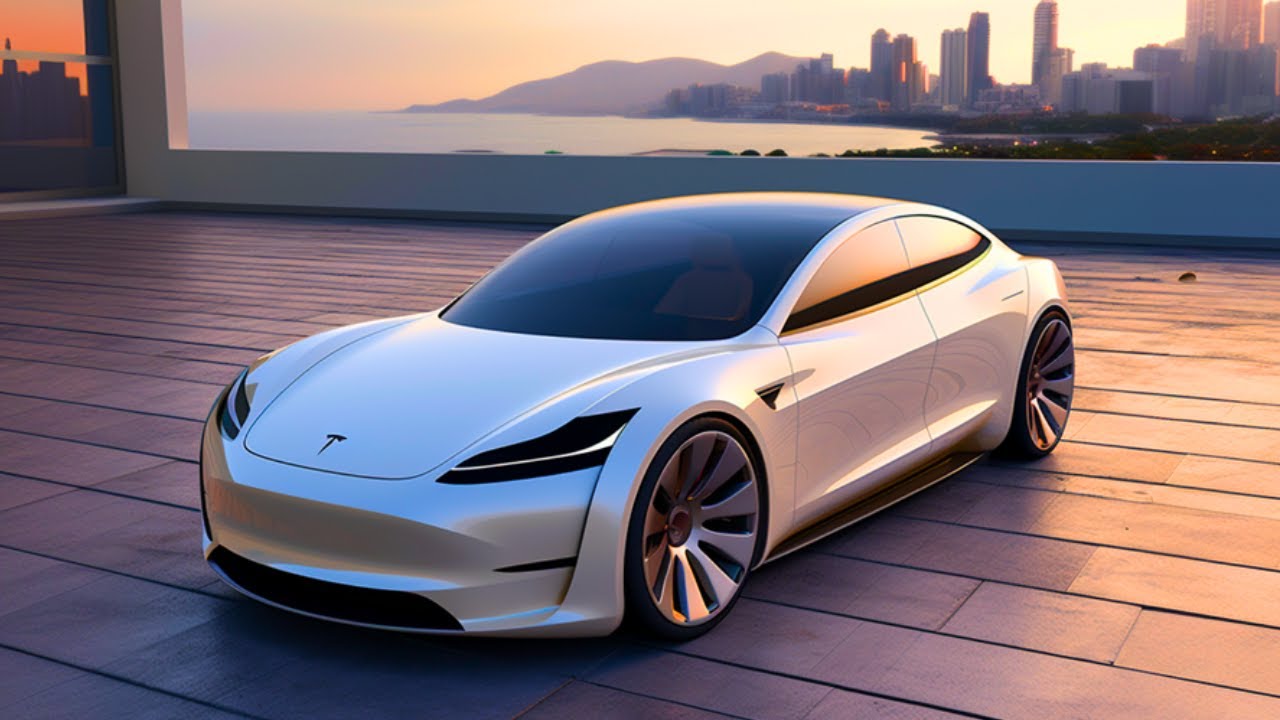
1. Tesla Model S (Performance and Plaid Trims)
The Tesla Model S, particularly in its Performance and Plaid configurations, is one of the most extreme examples of a modern electric car that shreds through tires at a concerning rate. The cause is straightforward: torque. Electric vehicles (EVs) are known for instant torque delivery, but the Model S takes that concept to its limit.
With dual- or tri-motor setups delivering sub-2-second 0–60 times in the Plaid variant, the rubber simply cannot keep up with the raw acceleration forces. Every launch event, whether for fun or out of habit, places enormous strain on the tires, especially the rear ones on earlier dual-motor setups. Even moderate driving on a Model S often requires extra grip that softer tires provide, at the expense of tread life.
The problem is compounded by the type of tires Tesla equips from the factory. High-performance variants come with ultra-high-performance summer tires like Michelin Pilot Sport 4S or Pirelli P Zeros.
These tires are made from soft compounds designed to maximize grip and handling, not longevity. Their treadwear ratings often fall in the 220–300 range, which is half that of a standard all-season touring tire.
While they perform admirably in terms of traction and cornering precision, they often last only 15,000 to 20,000 miles under average use—and even less under aggressive driving. Tesla does offer tire rotation reminders, but with uneven wear patterns, particularly on the rears, this is often a case of delaying the inevitable rather than preventing it.
Weight also plays a crucial role. The Model S is a heavy car, often weighing over 4,800 pounds due to its massive battery pack. The added weight puts greater stress on the tires, particularly during cornering and braking. The tires carry more load than their gas-powered counterparts in similar segments, which accelerates wear and increases the chance of shoulder and inner edge degradation.
Even with perfect alignment and regular rotations, the weight simply means there’s more downforce to distribute, and that inevitably leads to shorter tire life. Furthermore, regenerative braking—while energy efficient—adds a new dynamic to tire wear, particularly for drivers who rely heavily on one-pedal driving.
The final factor is the driver profile. Tesla’s allure, particularly in the high-performance trims, tends to attract enthusiastic drivers who enjoy exploiting the car’s incredible speed capabilities. With constant access to face-melting torque, it becomes difficult for many owners to resist frequent hard launches and spirited acceleration.
Combine that behavior with inherently soft tires, heavy curb weight, and the unforgiving nature of instant torque, and the Model S becomes one of the most tire-hungry vehicles in the modern market. Owners should budget for frequent replacements, particularly if they want to maintain the car’s performance and safety standards.
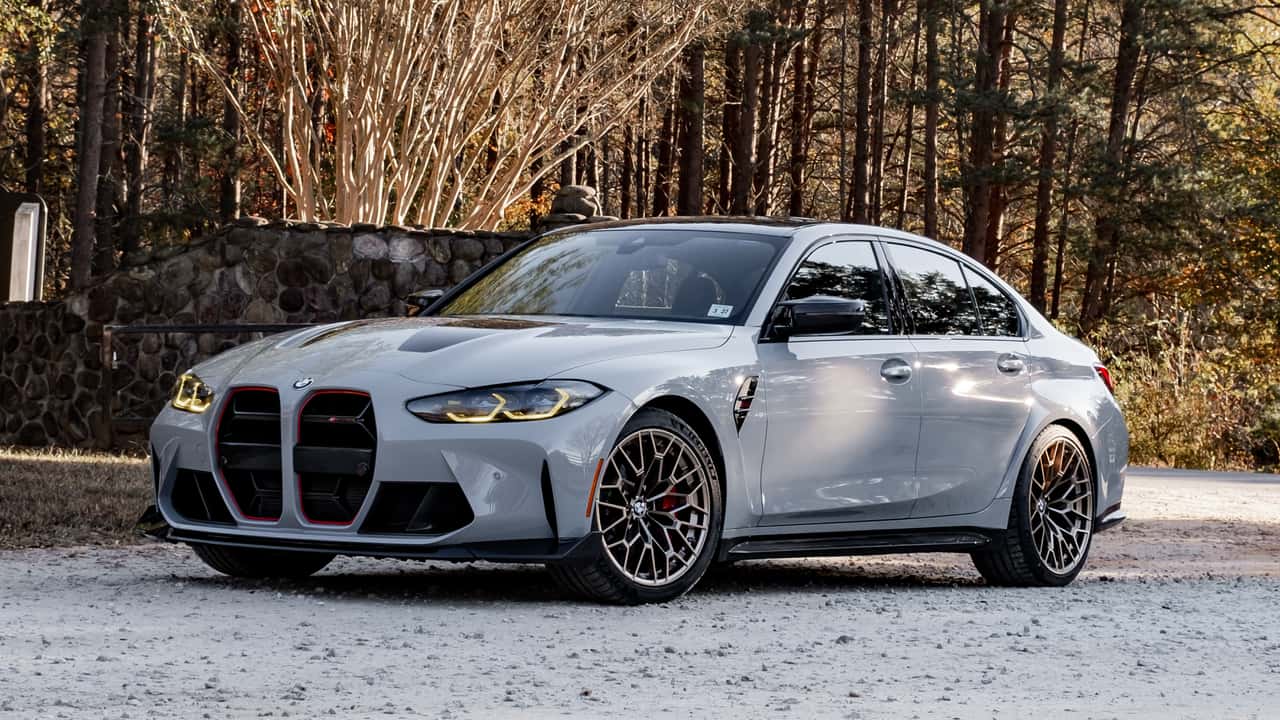
2. BMW M3
The BMW M3 has long stood as a benchmark in the sports sedan world, known for its precise handling, aggressive engine options, and rear-wheel-drive dynamics (or all-wheel-drive in recent trims). However, this performance comes at a cost—especially when it comes to tires.
From the E46 generation to the latest G80, the M3 demands high levels of grip to fully utilize its chassis, and that means wide, sticky rubber that wears out fast. Rear-wheel-drive variants, in particular, are notorious for burning through rear tires quickly, especially in the hands of drivers who enjoy the M3’s tail-happy nature and track-day potential.
Tire wear is further accelerated by the M3’s performance tuning. Unlike commuter sedans or economy cars, the M3 uses a stiffer suspension setup with more aggressive camber and toe settings, especially in sport or track modes. These geometry adjustments improve handling, but they also increase inner tire wear, particularly when the car is driven hard in corners.
On earlier models, owners frequently noted accelerated shoulder wear even with relatively normal street driving. The M3’s sharp turn-in and suspension stiffness, while fantastic for dynamic driving, can lead to cupping, feathering, and edge deterioration on the tires within just a few thousand miles.
Tire type and size also play a role. The M3 typically uses staggered setups—wider rear tires than front—which limits the ability to rotate them front to back. While this enhances traction under acceleration, it ensures that the rear tires wear significantly faster, especially on models producing over 400 horsepower.
The latest G80 M3 can push over 500 horsepower in Competition trim, and BMW pairs this with ultra-high-performance tires from brands like Michelin and Continental. These tires offer superb dry grip but come with treadwear ratings under 300. With aggressive driving, owners often find themselves replacing the rear set at just 10,000–15,000 miles.
Another factor is driver behavior and expectations. M3 owners are generally performance enthusiasts who expect to drive their vehicles the way they were meant to be driven—hard. Many frequently switch between different drive modes, utilize launch control, or engage in canyon carving or track events.
While this maximizes the enjoyment of the vehicle, it also dramatically accelerates tire wear. Even when used solely for street driving, the M3’s combination of power, grip, suspension setup, and driver habits contribute to tire life that’s far shorter than the industry average. For those interested in purchasing or leasing an M3, factoring in tire replacements every 12,000–20,000 miles is not just smart—it’s essential.
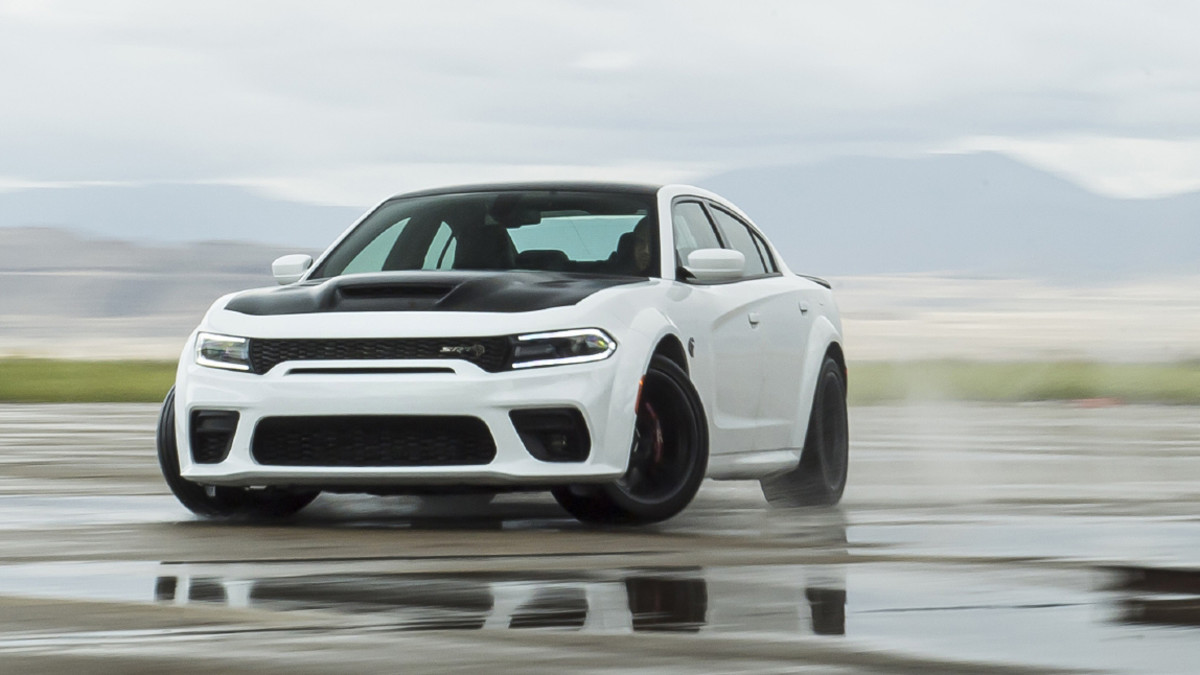
3. Dodge Charger Hellcat
The Dodge Charger Hellcat is an American muscle legend with a 700+ horsepower supercharged V8 and an appetite for speed, smoke—and tires. Built for brute-force performance rather than tire-friendly efficiency, the Hellcat burns rubber almost by design.
With this much power sent to the rear wheels, and often on ultra-wide tires (sometimes as wide as 305 mm), even moderate throttle use can result in tire spin.
Traction control helps mitigate this to a degree, but even it can’t fully restrain 650 lb-ft of torque when the accelerator is buried. The moment the driver engages in spirited driving, the tires become consumables more than wearables.
One of the main culprits of tire wear on the Charger Hellcat is its sheer weight and rear-wheel-drive layout. Weighing over 4,400 pounds and putting all that weight on the rear tires during launches or corner exits places tremendous stress on the rubber.
That’s exacerbated by the fact that the Hellcat’s powertrain doesn’t taper off—it delivers its torque hard and fast. Launch control, while fun, further increases rear tire degradation.
Unlike cars that balance power to all four wheels, the Hellcat doubles the pressure on its rear tires. This results in flat-spotting, cupping, and shoulder scrubbing, especially under hard acceleration and heavy braking.
The Hellcat also uses performance summer tires that prioritize grip over longevity. Brands like Pirelli and Goodyear offer OEM tires for the Hellcat that excel in heat management and lateral grip but have treadwear ratings around 220–280. These tires may only last 10,000 to 15,000 miles under average driving conditions.
And for drivers who enjoy burnouts—whether at the drag strip or a red light—that number can plummet. Regular street driving doesn’t spare the tires much, either. The Hellcat’s stiff suspension and imperfect road conditions combine to wear down tires faster than on most high-performance sedans.
Lastly, the Charger Hellcat attracts a specific kind of driver—one who doesn’t buy a 700-horsepower sedan for easy cruising. It’s a car designed for aggressive use, and its owners are well aware of that. Many use their vehicles for drag racing, street pulls, or spirited highway blasts.
This usage inevitably takes a toll on the tires. Even careful drivers who avoid racing conditions will find that they’re replacing their rear tires much more frequently than expected. In short, the Hellcat turns tires into a regular maintenance item—almost like oil changes—but with a much heftier price tag.
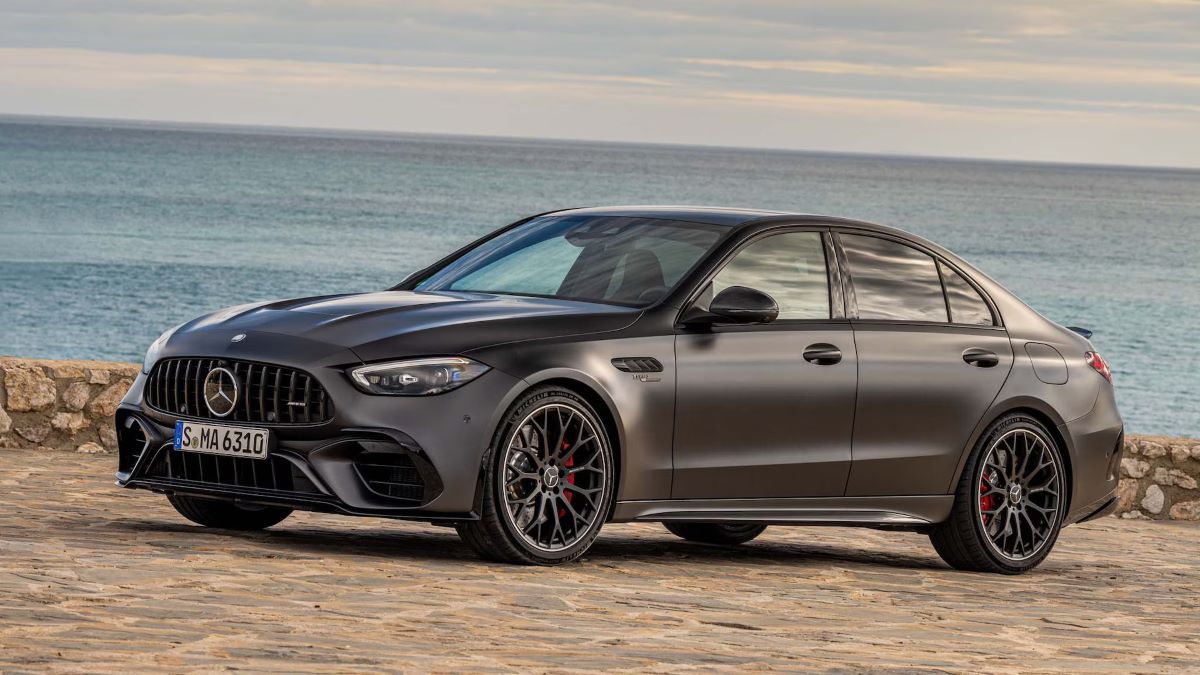
4. Mercedes-AMG C63
The Mercedes-AMG C63 is a luxury sedan with an unruly side. Packing a V8 engine and a stiff sport suspension, the C63 delivers performance on par with supercars from just a decade ago. It’s an intoxicating machine—but one that devours tires as readily as it drinks fuel.
Rear-wheel-drive versions in particular are hard on tires, especially when driven in Sport+ or Race mode. Instant torque delivery, especially on the twin-turbo V8 in recent models, causes frequent traction breakaway, even on dry pavement.
This wears the rear tires quickly, and because of Mercedes’ aggressive alignment settings, the edges of the tires—especially the inner shoulders—tend to vanish first.
Tire wear is made worse by the car’s chassis tuning. AMG engineers prioritize handling and response over comfort, so the suspension setup is stiff, the damping sharp, and the camber angles aggressive. This setup keeps the car glued to the road during high-speed maneuvers but at the expense of uniform tire wear.
Even if the car is driven conservatively, the default alignment geometry ensures that tires experience more pressure on their inner edges than in the center. Without frequent rotation and alignment checks, owners can see tires wear out unevenly within 10,000 to 12,000 miles, sometimes even sooner with aggressive driving.
The C63’s tire choices also exacerbate the issue. OEM tires are almost exclusively ultra-high-performance models from Continental, Michelin, or Dunlop—often designed with summer compounds that thrive on dry pavement but fade quickly under normal usage.
These tires are expensive and typically come with low treadwear ratings. The staggered wheel setup—wider rears than fronts—makes tire rotation more difficult and forces owners to replace tires in pairs rather than as a full set. When factoring in the cost of replacement, it’s not uncommon for AMG drivers to spend thousands on tires over the life of the vehicle.
Lastly, the driving persona of the C63 encourages behaviors that don’t align with tire conservation. The engine growls, the exhaust cracks, and the car begs to be driven hard. Whether it’s high-speed acceleration, hard cornering, or occasional burnout antics, the car thrives when pushed.
And naturally, so do its owners. Even drivers who attempt to resist the temptation often find the AMG’s responsiveness almost forces an aggressive driving style. Combined with the soft compound tires and aggressive alignment, the result is rapid and often uneven tire wear that surprises even seasoned enthusiasts.
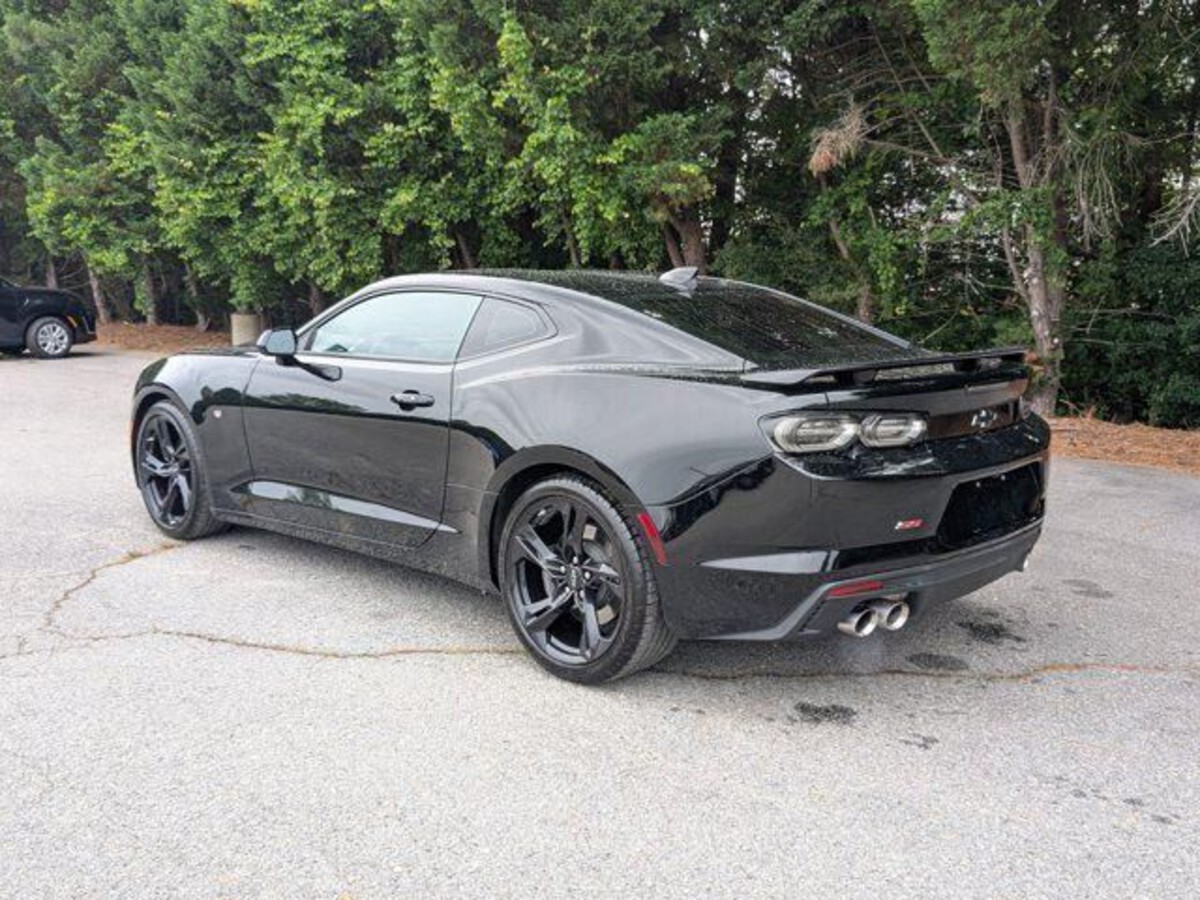
5. Chevrolet Camaro SS / ZL1
The Chevrolet Camaro, especially in its SS and ZL1 variants, is another American powerhouse known as much for its brute-force acceleration as for its appetite for tires. These muscle cars offer exceptional straight-line speed and cornering grip, but that comes with frequent tire replacements.
Both trims come with wide, staggered, high-performance tires, with the ZL1, in particular, riding on super-sticky Goodyear Eagle F1 SuperCar tires. These are built for track performance and offer phenomenal grip—but at the cost of very low tread life. In regular use, ZL1 owners may see tire life as low as 10,000 miles, and that’s without pushing the car too hard.
The Camaro’s chassis dynamics also play a role. Designed to be stiff and responsive, the suspension setup encourages aggressive cornering, which in turn wears down the outer shoulders of the tires faster than average. With wide rear tires—up to 305 mm on some trims—the car delivers incredible traction under acceleration but puts huge stress on the rear rubber.
Launch control, burnout mode, and sport-tuned stability control all feed into a culture of performance-first driving. Every feature that enhances the Camaro’s street and track prowess comes at the expense of tire longevity.
Weight and power are additional contributors. The Camaro SS and ZL1 are heavy vehicles with powerful V8 engines that generate between 455 and 650 horsepower.
That power is sent to the rear wheels and, when paired with aggressive throttle input, easily overwhelms the tires. Hard launches, power oversteer, and drifting are all accessible in these trims—if not encouraged by the vehicle’s design and marketing. The result is excessive heat buildup in the tires, which leads to faster rubber breakdown and shorter overall lifespan.
Even casual drivers will find themselves replacing tires more frequently than they would with most other performance vehicles. The ZL1’s track-ready setup, in particular, essentially treats tires as disposable performance parts.
Owners who daily-drive their Camaros and avoid aggressive driving may extend tire life slightly, but the car’s weight, alignment, and tire specs ensure that wear is still significantly above average. For performance enthusiasts, the cost is part of the experience. For others, it can come as a rude—and expensive—surprise.
Also Read: 5 Trucks With Best OEM Navigation Maps And 5 Needing Updates
After exploring the tire-wear characteristics of ten distinct vehicles—five engineered to maximize tire longevity and five infamous for burning through rubber—it becomes clear that not all cars treat tires equally.
Tire wear isn’t just a reflection of driving style or maintenance habits; it’s a direct consequence of how a car is designed, what it’s made for, and how it delivers its power and performance. The differences between a long-lasting set of tires and a short-lived one can be thousands of miles—and hundreds or even thousands of dollars over a car’s life cycle.
On the long-lasting end of the spectrum, we saw vehicles like the Toyota Camry, Honda Accord, and Subaru Outback shine for their practical engineering and balanced dynamics. These cars are built for efficiency, daily usability, and comfort—traits that contribute to smoother power delivery, lighter vehicle weight, and suspension setups that minimize uneven or accelerated wear.
Tires on these cars are usually standard all-seasons with treadwear ratings in the 500–700 range, translating to lifespans of 60,000 to 80,000 miles or more. Importantly, the types of drivers these vehicles attract—commuters, families, and long-distance travelers—are also less likely to engage in behavior that depletes tire life, such as aggressive acceleration or harsh cornering.
Then we moved to the opposite end: the tire-melting machines like the Tesla Model S Plaid, BMW M3, and Dodge Charger Hellcat. These cars are designed for peak performance, which includes monstrous power outputs, firm suspension settings, and tire compounds selected for grip rather than endurance. It’s no surprise that the tires on these vehicles degrade rapidly—sometimes in less than 15,000 miles.
Even in everyday driving conditions, the forces exerted on these tires are immense. Heavy curb weights, aggressive torque application, and high cornering loads push tire materials to their limit. Even the most responsible driver will struggle to get the mileage out of a performance tire that a mid-tier sedan owner might take for granted.
What makes this discussion especially relevant is how tire wear influences overall cost of ownership and vehicle satisfaction. While it’s easy to focus on sticker prices or MPG ratings, tire replacement frequency can significantly alter the economics of owning a car.
For high-performance vehicles, a new set of tires can cost $1,000 or more—an expense that can recur every 10,000–15,000 miles if the car is driven enthusiastically. On the other hand, cars that extend tire life help owners save on both direct costs and the indirect stress of constant maintenance.
This doesn’t mean high-wear cars should be avoided—they simply demand a more informed approach. Performance cars like the Camaro ZL1 or AMG C63 offer extraordinary capabilities that justify their tire appetite for many drivers.
But potential buyers should go in with realistic expectations, factoring tire wear into their budgeting alongside fuel and insurance. Likewise, buyers of economy sedans should recognize that their choice might not come with the thrill of a track car, but will reward them with reliability and long-term savings—especially when tires last 2–3 times longer.
Ultimately, tire wear is a mechanical reality shaped by physics, engineering, and driver psychology. It’s influenced by horsepower and torque, alignment settings, suspension design, and tire compound—but also by how a vehicle tempts its driver.
The secret to tire longevity isn’t just careful driving; it’s about choosing the right tool for the job. If your goal is minimal maintenance and maximum lifespan, practical cars like the Mazda CX-5 or Hyundai Elantra make a compelling case. But if you’re chasing the exhilaration of a 0–60 launch in under three seconds, you should also be ready for regular visits to the tire shop.
In conclusion, being aware of your car’s tire-wear tendencies—whether you favor endurance or exhilaration—can help you drive smarter, plan better, and ultimately enjoy your vehicle more fully.

